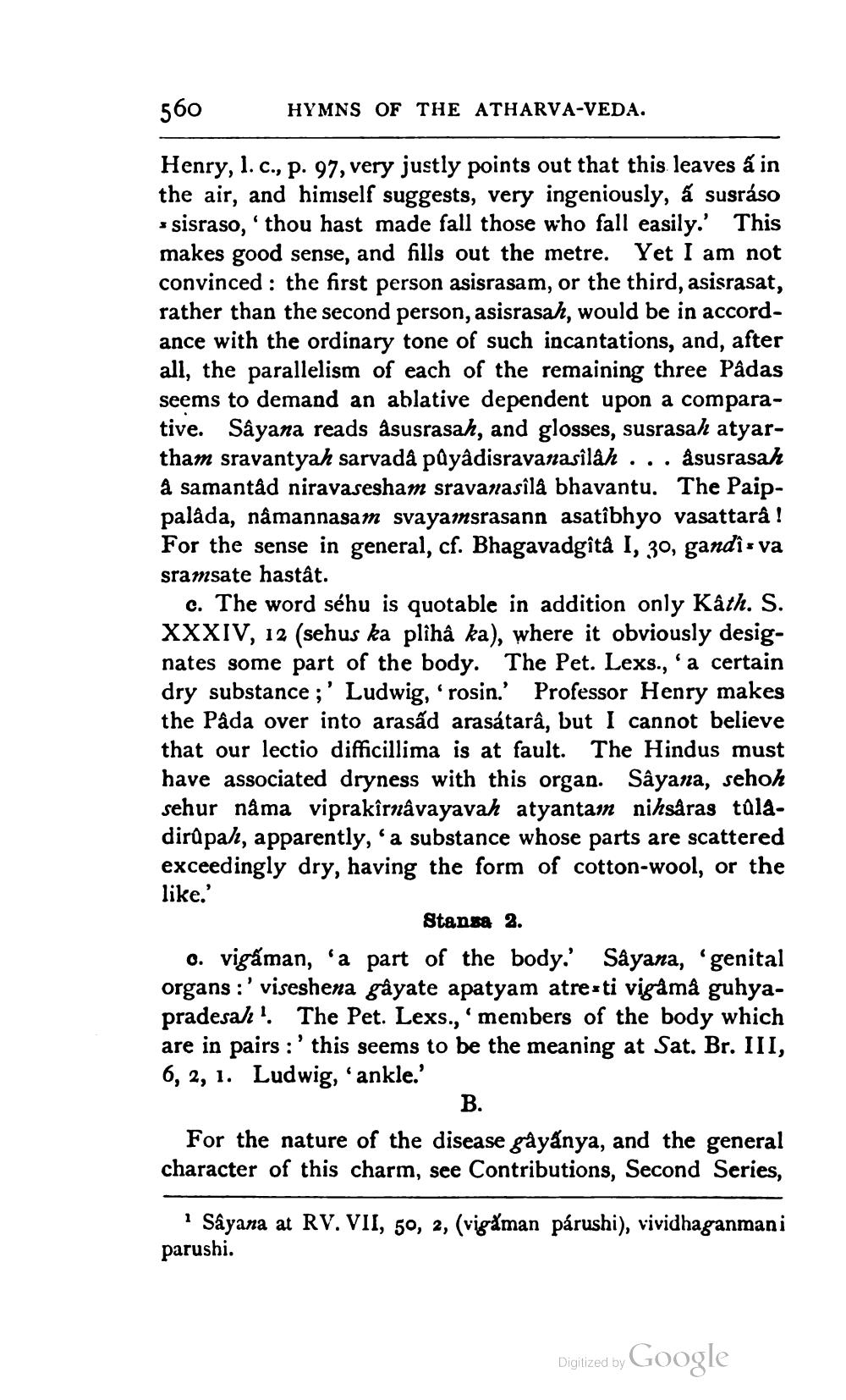________________
560
HYMNS OF THE ATHARVA-VEDA.
Henry, l. c., p. 97, very justly points out that this leaves a in the air, and himself suggests, very ingeniously, á susráso s sisraso,' thou hast made fall those who fall easily. This makes good sense, and fills out the metre. Yet I am not convinced : the first person asisrasam, or the third, asisrasat, rather than the second person, asisrasah, would be in accordance with the ordinary tone of such incantations, and, after all, the parallelism of each of the remaining three Pâdas seems to demand an ablative dependent upon a comparative. Sâyana reads asusrasah, and glosses, susrasah atyartham sravantyah sarvadå pâyâdisravanasilah . . . åsusrasah å samantad niravasesham sravanasîlå bhavantu. The Paippalada, nâmannasam svayamsrasann asatîbhyo vasattarâ ! For the sense in general, cf. Bhagavadgitå I, 30, gandis va sramsate hastât.
c. The word sehu is quotable in addition only Kath. S. XXXIV, 12 (sehus ka plihâ ka), where it obviously designates some part of the body. The Pet. Lexs.,' a certain dry substance ;' Ludwig, 'rosin.' Professor Henry makes the Pâda over into arasıd arasátarâ, but I cannot believe that our lectio difficillima is at fault. The Hindus must have associated dryness with this organ. Sâyana, sehoh sehur nama viprakîrnavayavah atyantain nihsaras tuladirûpah, apparently, a substance whose parts are scattered exceedingly dry, having the form of cotton-wool, or the like.'
Stansa 2. 0. vigấman, 'a part of the body. Sảyana, 'genital organs :' viseshena gayate apatyam atresti vigamå guhyapradesal! The Pet. Lexs., 'members of the body which are in pairs :' this seems to be the meaning at Sat. Br. III, 6, 2, 1. Ludwig, ankle.'
For the nature of the disease gayanya, and the general character of this charm, see Contributions, Second Series,
Sâyana at RV. VII, 50, 2, (vigåman párushi), vividhaganmani parushi.
Digitized by Google




